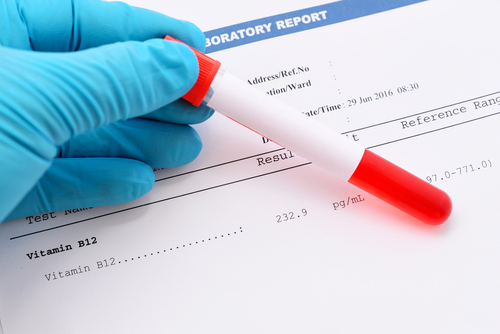Individuals With PWS Harbor Lower Levels of Irisin Hormone Than Other Obese People, Study Finds

Levels of the hormone irisin are elevated in obese people, but not in those with Prader-Willi syndrome (PWS), likely reflecting underlying differences in fat and muscle composition, a new study shows.
The study, “Irisin levels in genetic and essential obesity: clues for a potential dual role,” was published in the journal Scientific Reports.
Research has shown that irisin affects metabolic parameters in the body since the hormone was first discovered in 2012. Levels of irisin have previously been associated with both fat and muscle mass. However, its role in PWS has not been thoroughly explored.
In the study, scientists in Italy compared irisin levels in three groups: the first included 30 adults with PWS (mean age of 35.7 years, average body mass index or BMI of 45.5 kg/m2); the second group included 30 adults with common (non-genetic) obesity with similar age and BMI; and the third group included 20 non-obese adults.
As expected, these groups showed different body composition and metabolic profile. For example, the PWS group had lower muscle mass than the common obesity group, as well as lower levels of insulin and triglycerides (a type of fat).
Irisin levels were similar in the PWS and lean groups. However, they were significantly higher in the common obesity group than in either of the other groups. These levels also tended to be more variable in the common obesity group than in the other groups.
Even after removing abnormally high hormone levels (over 40 ng/mL), those with common obesity still had greater levels of irisin when compared with the PWS group.
Men and women did not differ in their irisin levels in any of the groups.
The team then performed statistical analyses to examine the association between irisin levels and various metabolic parameters. Due to the limited number of participants in each group, the two groups with obesity (PWS and common obesity) were pooled for this analysis.
Hormone levels were significantly associated with muscle mass. However, this link was no longer seen after accounting for whether or not participants had PWS, “suggesting that variations in irisin levels likely reflected differences in muscle mass between [PWS and common obesity] groups,” the scientists wrote. A similar association was found between irisin and insulin levels.
Higher fat mass and triglyceride levels were also correlated with greater irisin levels. These associations remained significant after controlling for PWS status.
“We are inclined to interpret the underlying divergences with caution, because differences in sample number, anthropometric characteristics [body measurements], BMI and biological matrices could play a role,” the researchers wrote. “However, a number of clues make our results consistent with the recognized metabolic roles of irisin.”
Muscles are thought to be the primary producers of irisin in the body. So, having more muscle would mean more hormone being made, the team suggested. Another major source of irisin is fat tissue, as reported in mice. As such, levels of the hormone could be associated with the amount of fat mass, also because prior research suggested that obesity increases the contribution of fat mass to irisin production.
Genetic changes in people with PWS could also account for differences in irisin and its associated parameters. Future studies will be needed to clarify these findings, the researchers said.
“Together,” they wrote, “our findings suggest that circulating irisin levels increase in common obesity but not in PWS-related obesity, and this discrepancy likely reflects differences both in fat and muscle mass between these obese populations.”






